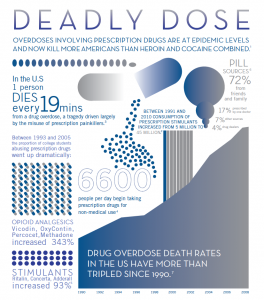
Prescription drug abuse in the U.S. rose dramatically in the last 20 years and is especially prevalent among college students, but BYU students are seemingly less affected.
Jon Cox, psychologist and Outreach coordinator for Counseling and Psychological Services on campus, works with students suffering from mental illness and addiction. While drug abusers of any kind are encouraged to talk to specialists, Cox said there may be students overusing prescription drugs who come looking for help at BYU.
“I think we have less of a problem with drug abuse in general than most other campuses,” Cox said, adding that prescription drug abuse incidents are neither specifically documented nor are they common occurrences.
“There’s a reason BYU is one of the stone-cold sober universities around,” Cox said, attributing it to the Honor Code and religiosity of the students on campus.
However, BYU is still surrounded by prescription drug abuse. The recent increase in prescription drug abuse in Provo is part of the epidemic that swept the entire nation, causing an increase in prescription stimulant consumption from 5 million to 45 million in the last 20 years, according to a Clinton Foundation report.
“There’s a good bit of prescription drugs going around,” said Lt. Mathew Siufanua of the Provo Police.
Lt. Siufanua mentioned the increased availability of such drugs as a cause for the increase in their abuse, mentioning that many abusers get the drugs from the family cupboard. The most common prescription drugs found by the police from drug abusers are Loritab and Oxycontin.
“In the last 10 years we’ve seen a big increase in Oxycontin,” Lt. Siufanua said. “When I first started it was Loritab, but it quickly shifted.”
In some states, prescription drug abuse is considered a bigger threat than the use of illicit or illegal drugs. In 2010, 13.9 percent of surveyed state and local law enforcement agencies considered controlled prescription drugs as their greatest drug threat, according to the most recent report by the FBI.
Another reason why the abuse of prescription medication has become increasingly prevalent may also have to do with doctors and physicians according to Pat Bird, the prevention program manager of the Utah County Department of Drug and Alcohol Prevention and Treatment.
“We’ve seen a change from the late ’90s to 2013 where prescribing increased dramatically for pain medications,” Bird said. “We’ve had some situations occur where some, not all, doctors have been over-prescribing.”
Bird’s drug prevention program includes training for doctors and physicians on the best prescribing habits so as to avoid exacerbating the problem of prescription drug overuse. It also provides resources and information to help those who overuse prescription medication.
Prescription stimulants like Ritalin or Adderall have been increasingly taken by college students so as to help them stay awake and study, as reported by The Miami Student, but most prescription medications are still opioids that are designed to take pain and anxiety away.
“They’re looking to numb pain or avoid a certain feeling,” Bird said.
Recent efforts to prevent prescription drug misuse include “Take-Back” days that allow anyone to anonymously give up unused or unwanted drugs from home to designated collection facilities that dispose of the drugs. Since the first nation-wide “Take-Back” day in 2010, several hundred tons of drugs have been collected and destroyed.




